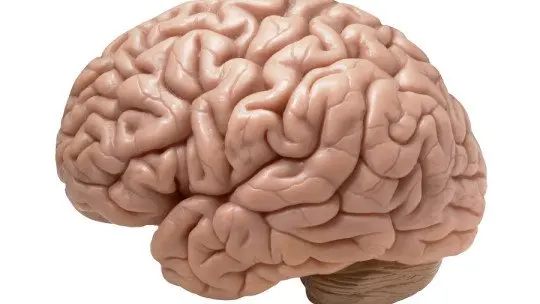
Maybe you have ever seen or heard the acronym ADHD, but… Do you know what Attention Deficit Hyperactivity Disorder consists of and how to distinguish it from other disorders?
ADHD is a neurobiological disorder that usually originates in childhood, and may also be present in adolescence or adulthood.
According to the current Diagnostic and Statistical Manual of Mental Disorders (DSM-5), it is classified as a Neurodevelopmental Disorder. Its core symptoms are: attention deficit, hyperactivity and/or impulsivity.
What is ADHD like?
Generally, people who have ADHD may have the following cognitive or behavioral characteristics: difficulty concentrating and perseverance, problems planning or organizing tasks, complications when implementing self-control (inhibit thoughts or actions), deficits in working memory, difficulty identifying/recognizing emotions or problems with social interaction.
Different variables must be taken into account when diagnosing a child with ADHD, since we quickly tend to label it when we see a child who is restless or inattentive, but we have to remember that it is a chronic disorder, which consists of a structural, functional and connectivity alteration between different brain areas.
So, the preparation of a detailed medical history is required, integrating various sources of information and taking into account the diagnostic criteria of the current DSM (DSM-5). In this way, the diagnosis requires the persistence of symptoms of inattention and/or hyperactivity/impulsivity with an intensity that significantly interferes with the child’s functioning in at least two different contexts.
In relation to the above, each case must be evaluated individually, also exploring the presence of comorbidity with other disorders and possible differential diagnosis, since nuclear symptoms may be present in other pathologies. In this sense, these symptoms may be secondary to other disorders, comorbid, or both situations at the same time. Let’s look at it in more detail, below.
Differential diagnosis
In relation to the above, each case must be evaluated individually, also exploring the presence of comorbidity with other disorders and possible differential diagnosis, since nuclear symptoms may be present in other pathologies.
In this sense, These symptoms may be secondary to other disorders, comorbid, or both situations at the same time.. Let’s look at it in more detail, below.
ADHD symptoms secondary to environmental factors:
ADHD symptoms secondary to other diseases:

What pathologies does ADHD have comorbidity with?
Approximately Half of patients diagnosed with ADHD have at least one comorbid disorder. Therefore, possible comorbidities must be taken into account at the time of diagnosis, since the presence of other disorders (added to the diagnosis of ADHD) can influence the initial clinical presentation, the evolution of the symptoms and the response to the intervention.
Comorbidity with neurodevelopmental disorders
When diagnosed with ADHD, the presence of other neurodevelopmental disorders should be explored and vice versa.
1. Intellectual development disorders
It is estimated that the appearance of ADHD symptoms in people with intellectual disabilities is higher than the rates obtained in the general population.
- You may be interested: “Intellectual and developmental disabilities”
2. Communication disorders
Different studies describe a strong comorbidity between social or pragmatic communication disorder with other disorders, such as ADHD.
3. Autism spectrum disorders (ASD)
The most recent edition of the DSM (DSM-5) allows a person to be diagnosed with both ASD and ADHD, when this was not possible before.. Both share some symptoms and seem to share the same deterioration; They present alterations in executive function, although with different nuances.
For example, children with ADHD experience deficits in inhibitory control while children with ASD have severe problems in cognitive flexibility and planning, generally retaining inhibition skills.
- You may be interested: “The 4 types of autism and their characteristics”
4. Specific learning disorders
Its comorbidity with ADHD is around 20%. Academic difficulties as a consequence of problems integrating knowledge is one of the characteristics most clearly associated with ADHD.
However, ADHD and learning disorders are different entities that can occur simultaneously, distinguishing themselves from each other. For example, children with ADHD tend to be more variable in their performance, since this usually depends on environmental conditions.
- Related article: “Learning disorders: types, symptoms, causes and treatments”
5. Motor disorders
More than 30% of patients diagnosed with ADHD They usually present very rigid movements or alterations in motor coordination. The number of children with ADHD who have frequent falls or trips as a consequence of their gross motor deficiencies is significant.
- You may be interested: “Psychomotor disorders: types, characteristics and symptoms”
Comorbidity with other disorders
These are other health disorders that often overlap with the symptoms of ADHD.
1. Disruptive behavior disorders
They have a 40% comorbidity with ADHD. The types of disorders that we find are those of a negativistic, defiant or aggressive nature.
2. Anxiety disorders
With 25% comorbidity, Anxiety Disorders also overlap a lot with ADHD. The most common symptoms are excessive concern about competition in certain areas, unrealistic fear about future events or an excessive need to be assured.
- You may be interested: “Types of Anxiety Disorders and their characteristics”
3. Mood disorders
Comorbidity is 30%. Major depressive disorder is more prevalent among children with ADHD than in the general population. Feelings of worthlessness, incapacity or low self-esteem appear, as well as a low mood or disturbances in sleep and eating.
4. Substance abuse disorders
One of the most common comorbid disorders in adults diagnosed with ADHD is substance abuse disorder. Approximately 20-30% of patients with this last disorder have ADHD.
When ADHD symptoms can be secondary or comorbid
In the following pathologies, the symptoms of ADHD can occur secondarily, or it can also occur comorbidly. This can increase the difficulty of diagnosissometimes leading to a double diagnosis for correct treatment of both problems.
- Craniocerebral trauma.
- Acquired brain damage.
-
Epilepsy.
- Sleep disorders.
-
Fetal alcohol syndrome.
- Genetic syndromes: Fragile X, Prader-Willi, Klinefelter, etc.
Concluding…
In short, ADHD It goes beyond a child who misbehaves, who does not listen or who is very nervous, or a person who does not pay attention or has difficulty planning and organizing..
As I said, to carry out an adequate diagnosis, it is necessary to prepare a meticulous clinical history, taking into account different sources of information, assessing the nature of the symptoms that are presented to us, as well as the degree of impact in the different contexts. of the individual we are evaluating.
Thus, in line with everything stated above, we cannot leave aside the differential diagnosis and the exploration of other possible comorbid disorders or diseases.
Author: Maribel Martín, General Health Psychologist at Rapport Psychology Center.








